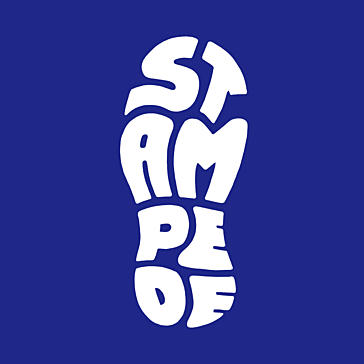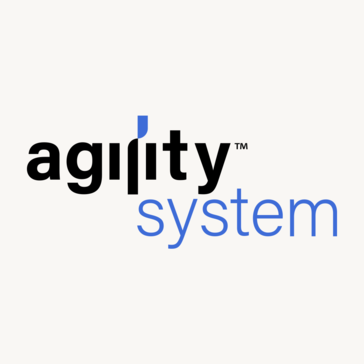4.9
Risk Ledger Review
Discover how Risk Ledger tackles security risks in our review. Explore features, pricing, support, updates, and value for money. See if it fits your needs!
Introduction to Risk Ledger
Understanding Risk Ledger involves grasping its innovative network approach to third-party risk management. Unlike static questionnaires, it provides dynamic, real-time visibility into your supply chain's security posture using a secure social platform model. This Risk Ledger review explores how this method streamlines vendor risk assessment and monitoring. Getting started with Risk Ledger is simplified for rapid onboarding. Key benefits of Risk Ledger include continuous monitoring, greater efficiency, and better supplier collaboration on security. This overview covers the Risk Ledger basics, setting the stage for a deeper dive into its features and overall value proposition for managing complex supplier networks effectively.
Comprehensive overview and target audience
Risk Ledger operates as a secure social network platform specifically designed for managing supply chain cyber security risks. It moves beyond traditional questionnaire based methods, offering a more dynamic and collaborative approach. Organisations connect with their suppliers within the platform, gaining continuous visibility into their security posture through a standardized assessment framework. This network effect is central to its proposition, allowing both clients and suppliers to manage risk information efficiently.
The primary target audience includes medium to large enterprises across various sectors, particularly those with complex or extensive digital supply chains. This often encompasses industries like finance, technology, critical infrastructure, and professional services. Essentially, any organisation concerned about the security risks introduced by third party vendors will find Risk Ledger relevant. Specific roles benefiting include CISOs, procurement managers, risk officers, and supplier relationship managers seeking a streamlined solution for third party assurance.
Key Risk Ledger security features focus on providing real time insights and fostering transparency between connected organizations. The platform facilitates secure information sharing, continuous monitoring capabilities based on supplier assessments, and standardised security frameworks. Its unique network model means suppliers complete one comprehensive security profile shared securely with multiple clients, saving significant effort for everyone involved. The emphasis is on proactive risk identification and management rather than merely reactive compliance checks, making security a collaborative effort.
The development team actively provides Risk Ledger updates and new features, demonstrating a commitment to enhancing functionality and responding to emerging cyber threats and user feedback. This ongoing improvement cycle is crucial for maintaining effectiveness in the rapidly changing security environment. Users benefit from these enhancements which often include usability improvements, new integration options, and expanded assessment scopes to cover evolving risk domains.
When considering adoption, evaluating Risk Ledger value for money is important. While specific costs typically require direct engagement, many organizations find the investment justified by the significant reduction in manual effort for assessment chasing, greatly improved risk visibility across the supply chain, and the potential mitigation of costly security breaches originating from third parties. A thorough Risk Ledger pricing comparison against alternative point solutions or manual processes should be part of any procurement evaluation; Risk Ledger usually positions itself based on the depth of its network model and continuous visibility capabilities.
To ensure successful implementation and ongoing effective use, comprehensive Risk Ledger support and training resources are readily available. This includes accessible documentation, online help centers, webinars, and potentially dedicated customer success managers depending on the service tier. These resources help teams effectively leverage the platform’s full potential for robust supply chain risk management from day one.
User experience and functional capabilities
Delving into the Risk Ledger user experience insights reveals a platform designed for clarity and efficiency. Its interface borrows concepts from familiar social networks which generally translates into an intuitive navigation experience for both clients and suppliers. The focus is clearly on simplifying the complex task of supply chain risk management. Learning how to use Risk Ledger typically involves understanding its core workflow: inviting suppliers to connect, reviewing their standardised security assessments, and utilising the dashboard for continuous monitoring and risk overview. The platform presents risk data in an accessible format, aiming to reduce the usual friction associated with vendor assessments.
Functionally, Risk Ledger excels in its network approach. Instead of chasing individual questionnaires, organisations leverage a central hub where suppliers maintain a single security profile shared securely with their clients. Key capabilities include:
A standardised assessment framework covering critical security domains.
Real time visibility into supplier security posture changes.
Tools for communication and collaboration directly with suppliers on risk remediation.
Analytics and reporting features to track overall supply chain risk trends.
While a detailed Risk Ledger implementation guide is provided during onboarding, the process is designed to be relatively streamlined. The platform facilitates rapid supplier connection requests and provides resources to help suppliers complete their profiles efficiently. Support materials and customer success teams assist in navigating the initial setup and integration phases, ensuring users can quickly start deriving value.
Integrating Risk Ledger with other tools is crucial for many organizations seeking a holistic view of risk. Risk Ledger offers API capabilities allowing connection with broader GRC platforms, security information and event management systems, or procurement software. This enables the flow of supplier risk data into existing workflows and reporting structures, enhancing overall risk intelligence without creating isolated data silos. Continuous development ensures Risk Ledger updates and new features regularly enhance these integration options and overall platform functionality, responding to evolving security needs and user feedback.
However, like any system, users might encounter challenges. Common problems with Risk Ledger can sometimes involve encouraging prompt supplier adoption or navigating the initial data population if dealing with a very large and diverse supply chain. The platform actively works to mitigate these through support and refined onboarding processes. Best practices for maximising Risk Ledger’s value include fostering strong communication with suppliers about the platform’s benefits, regularly reviewing risk dashboards, and integrating the insights into broader procurement and security decision making processes. Effective use relies on treating it not just as a compliance tool but as a dynamic risk management ecosystem.
Who should be using Risk Ledger
Risk Ledger is primarily designed for medium to large organisations navigating the complexities of third party risk management particularly concerning cybersecurity. Companies across diverse sectors including finance technology critical infrastructure professional services and manufacturing find significant value. Essentially any business heavily reliant on a digital supply chain or concerned about the security vulnerabilities introduced by vendors suppliers and partners should consider Risk Ledger.
Within these organisations specific teams and roles stand to gain the most including:
Cybersecurity teams specifically CISOs and security managers seeking continuous visibility and proactive threat mitigation beyond point in time questionnaires.
Procurement and vendor management departments aiming to streamline supplier onboarding assess risk efficiently and integrate security into purchasing decisions.
Risk and compliance officers needing a robust auditable system for managing third party assurance and demonstrating due diligence.
Supplier relationship managers looking for a collaborative platform to work with suppliers on improving security posture rather than just assessing it.
A common Risk Ledger use case scenario involves an organisation struggling with the time consuming process of sending collecting and analysing hundreds of bespoke security questionnaires. They lack real time insight into their suppliers’ evolving security status creating significant blind spots. By adopting Risk Ledger they replace this inefficient cycle. Suppliers join the network complete a standardised detailed assessment once and share it securely. The client organisation then gains immediate and continuous visibility monitoring for changes and collaborating directly on remediation efforts through the platform.
The platform is particularly well suited for businesses that recognise security as a shared responsibility and wish to foster a more collaborative relationship with their suppliers. Organisations looking to move beyond mere compliance checkboxes towards genuine proactive risk reduction will find its network approach highly effective. Implementing Best practices for Risk Ledger such as integrating its insights into broader risk frameworks and actively engaging suppliers through the platform ensures maximum value is derived. It’s ideal for those committed to building a more resilient and transparent supply chain ecosystem. Companies simply looking for the cheapest basic compliance check might find simpler tools sufficient; Risk Ledger excels where dynamic visibility and collaboration are paramount.
Unique Features offered by Risk Ledger
Risk Ledger distinguishes itself primarily through its unique secure social network model for supply chain risk management, a significant departure from traditional static assessments. This core architecture inherently provides features not commonly found elsewhere, such as continuous visibility derived from suppliers maintaining a single, shareable security profile. While the platform leverages a standardised assessment framework for consistency and efficiency across the network, there are avenues for tailoring its application to specific organisational needs.
Key unique features include:
- The Network Effect: Suppliers complete one comprehensive profile shared securely with multiple clients, drastically reducing questionnaire fatigue and improving data quality. This fosters collaboration rather than adversarial assessment.
- Continuous Monitoring: Unlike point in time questionnaires, Risk Ledger provides ongoing visibility into a supplier’s security posture, flagging changes or potential issues in near real time.
- Standardised Framework: Ensures a consistent baseline for evaluating suppliers, making comparisons and overall risk analysis more meaningful and efficient.
Regarding customization, while the core assessment is standard, organisations can tailor how they use the platform’s outputs. This includes configuring risk thresholds, internal workflows for remediation tracking, and reporting views. Effectively “Customizing Risk Ledger for business growth” involves leveraging its data within broader risk management strategies and procurement processes rather than altering the fundamental assessment itself. The platform’s structure facilitates scalability as a business grows its supplier network.
The question of “Risk Ledger for small businesses” often arises. Although its primary audience is medium to large enterprises due to the complexity it addresses, the benefit for suppliers is universal. Smaller suppliers gain efficiency by managing one profile. Smaller client businesses might find value if their risk exposure is significant, though the cost benefit compared to simpler tools would need careful evaluation. The platform’s focus is on managing complex supply chain risk inherent in larger operations.
“Integrating Risk Ledger with other tools” is a crucial aspect of its flexibility. Its API allows connection to GRC platforms, SIEM systems, and procurement software, enabling businesses to incorporate Risk Ledger’s unique supplier insights into their existing security and operational ecosystem. This integration capability is vital for creating a unified view of risk and automating workflows, further tailoring the solution’s impact to specific business contexts.
Pain points that Risk Ledger will help you solve
Managing third party risk is often fraught with frustration and inefficiency. Many organisations grapple with outdated processes that consume significant resources yet provide limited assurance. Risk Ledger directly addresses these common struggles, transforming how you approach supply chain security.
Are you tired of the endless cycle of sending, chasing, and analysing static security questionnaires? This traditional method is not only time consuming for your team but also places a heavy burden on your suppliers who face repetitive requests. Risk Ledger eliminates this pain point through its secure network model. Suppliers complete one comprehensive, standardised assessment profile and share it securely with multiple clients, drastically reducing questionnaire fatigue and freeing up your resources for more strategic risk management activities.
Another major challenge is the lack of real time visibility. Point in time assessments quickly become obsolete, leaving you unaware of emerging vulnerabilities within your supply chain. Risk Ledger provides continuous monitoring capabilities. You gain ongoing insight into your suppliers’ security posture, receiving alerts about significant changes. This shift from periodic checks to constant awareness allows for proactive risk mitigation rather than reactive responses after an incident.
Scaling third party risk management programmes, especially for organisations with extensive supply chains, presents significant operational hurdles. Manually managing assessments for hundreds or thousands of suppliers is unsustainable. Risk Ledger offers a scalable solution. While primarily designed for medium to large enterprises, considering “Risk Ledger for different businesses sizes” highlights its inherent scalability and the universal benefit it offers suppliers regardless of their size. The platform streamlines the onboarding and assessment review process, making it feasible to manage large networks effectively.
Furthermore, risk data often exists in silos, disconnected from other critical business systems. This fragmentation hinders a holistic view of risk. Risk Ledger tackles this by enabling the integration of its data into your wider ecosystem. “Integrating Risk Ledger with other tools” like GRC platforms or procurement systems via its API capabilities ensures that valuable supplier security insights inform broader decision making processes, breaking down data barriers.
Ultimately, Risk Ledger helps you move beyond a compliance focused, checkbox exercise towards genuine, collaborative risk reduction. It fosters transparency and partnership with your suppliers. By solving these critical pain points, you can build a more resilient supply chain. Leveraging these efficiencies and insights contributes directly to “Customizing Risk Ledger for business growth”, allowing you to focus on strategic goals with greater confidence in your operational security.
Scalability for business growth
As your business expands, so does its attack surface and the complexity of its supply chain. Traditional third party risk management methods often struggle to keep pace, becoming a significant bottleneck. Risk Ledger is architected with scalability at its core, ensuring your risk management capabilities grow seamlessly alongside your business operations. Its unique network model fundamentally supports expansion; unlike static questionnaires that multiply administrative burden with each new supplier, Risk Ledger allows efficient onboarding and management regardless of network size.
The platform’s efficiency stems from its core design: suppliers maintain a single, standardized profile shared securely with all their connected clients. This dramatically reduces the manual effort associated with chasing individual assessments, a task that quickly becomes unmanageable for rapidly growing companies. As you add more vendors, Risk Ledger handles the increased volume without a linear increase in your team’s workload. This inherent efficiency is central to Customizing Risk Ledger for business scalability. Your resources are freed up to focus on analysing insights and managing actual risks rather than administrative overhead.
This scalability directly enables business growth in several ways:
- It allows for rapid onboarding of new suppliers, crucial when expanding into new markets or launching new products.
- It provides consistent risk visibility across an enlarging supplier base, maintaining security posture even during periods of significant expansion.
- It ensures risk management processes do not hinder procurement or operational agility, supporting faster business development cycles.
Leveraging these scalable features means you are effectively Customizing Risk Ledger for business growth. Instead of being a reactive compliance function, third party risk management becomes a proactive enabler, providing the confidence needed to forge new partnerships and expand operations securely. Risk Ledger transforms scalability from a challenge into a strategic advantage. Its design anticipates growth, making it an ideal solution for ambitious organisations planning significant expansion.
Final Verdict about Risk Ledger
Our final verdict on Risk Ledger is overwhelmingly positive, particularly for organizations seeking a modern, efficient, and collaborative approach to supply chain security risk management. The platform successfully moves beyond the limitations of traditional, static questionnaire methods. Its core strength lies in the innovative secure network model. This allows suppliers to manage a single, comprehensive security profile shared securely with multiple clients, drastically reducing assessment fatigue for everyone involved.
Risk Ledger delivers significant value by tackling key pain points inherent in third party risk management. It replaces the time consuming cycle of chasing individual assessments with continuous visibility into supplier security posture. This shift enables proactive risk identification and mitigation rather than purely reactive compliance exercises. The platform’s clear user interface, inspired by familiar social network designs, generally facilitates intuitive navigation and usage for both clients and their suppliers, simplifying a complex domain.
Key benefits consistently highlighted include:
Improved operational efficiency through reduced manual assessment efforts.
Enhanced real time visibility across the supply chain security landscape.
A more collaborative relationship with suppliers focused on shared security goals.
Excellent scalability to support business growth without a proportional increase in risk management overhead.
While the standardised assessment framework might offer less granular customization compared to bespoke questionnaires, this standardisation is precisely what enables the network effect and its associated efficiencies. The platform is best suited for medium to large enterprises with complex digital supply chains who prioritize dynamic risk monitoring and supplier collaboration over checkbox compliance. Successful implementation hinges on fostering supplier engagement within the network. For companies ready to embrace a forward thinking, network based solution to build a more resilient supply chain, Risk Ledger presents a compelling and effective option.
Advantage
Disadvantage
Streamlined supplier security assessments
Continuous third-party cyber risk monitoring
Secure platform simplifies supplier collaboration
Reduce supplier assessment fatigue significantly
Gain real-time supply chain risk visibility
Disadvantage
Initial setup and training may require time
Pricing might be prohibitive for smaller organizations
Effectiveness depends heavily on supplier participation
May lack integrations with some specific tools
Might lack highly specialized risk assessment features
Rating
Supplier
£0 One_time
- Share security profile
- Respond to assessments
- Reduce questionnaires
- Control data sharing
- Track security improvements
Client
£8400 per Year Paid Yearly
- All features in Supplier
- Unlimited supplier connections
- Live supplier risk data
- Automate security assessments
- Manage supplier security risks
- Integrated risk register
- Standard integrations
- API access
Product Support
Web Based
Windows
Mac OS
Linux
Android
iOS
Phone Support
Email/Help Desk
AI Chat Bot
Live Support
24/7 Support
Forum & Community
Knowledge Base
Live Online
Documentation
Videos
In Person
Webinars
Company: Risk Ledger Ltd
Email: info@riskledger.com
Address:
2nd Floor, 16-18 Charterhouse Street, London, EC1M 6RAPhone: Not Available
Implementation
Web Based
Windows
Mac OS
Linux
Android
iOS
Support
Phone Support
Email/Help Desk
AI Chat Bot
Live Support
24/7 Support
Forum & Community
Knowledge Base
Training
Live Online
Documentation
Videos
In Person
Webinars
Group text
Company: Risk Ledger Ltd
Email: info@riskledger.com
Address:
2nd Floor, 16-18 Charterhouse Street, London, EC1M 6RA
Phone: Not Available
Alternative Products
Web Based
Documentation, Videos
Email/Help Desk, Live Support, Knowledge Base
Frequently Asked Questions
What exactly is Risk Ledger?
Risk Ledger is a pioneering third-party risk management (TPRM) platform built on a unique secure network model, designed to help organizations visualize, understand, and mitigate risks within their supply chain by connecting companies and their suppliers directly.
How can Risk Ledger help me?
Risk Ledger transforms your approach to supply chain security by moving away from cumbersome, point-in-time questionnaires; it gives you unprecedented visibility into supplier risks through real-time data, streamlines assessment processes saving significant time and resources, fosters collaboration with suppliers, and ultimately reduces your organization’s exposure to third-party breaches and compliance failures.
Who is Risk Ledger best suited for?
Risk Ledger excels for organizations, particularly mid-market to enterprise level, that manage a complex web of suppliers and require a more efficient, collaborative, and continuous approach to third-party risk than traditional, static methods offer; it’s ideal for Security, Compliance, Procurement, and Risk Management teams looking to mature their TPRM program.
What are the key features of the Risk Ledger platform?
Key features include its unique supplier network model (where suppliers manage and share one comprehensive security profile), standardized and customizable security assessments based on recognized frameworks, continuous risk monitoring capabilities, clear risk visualization dashboards, workflow automation for assessment chasing and review, secure document sharing, and robust reporting tools for compliance and oversight.
How does Risk Ledger improve supplier onboarding and assessment?
It revolutionizes supplier onboarding and assessment by enabling suppliers to maintain a single, live security profile they can securely share with multiple clients; this ‘assess once, share many times’ approach drastically reduces assessment fatigue for suppliers and provides buyers with faster access to up-to-date, verified security information, speeding up onboarding and enabling continuous visibility rather than periodic checks.
Is Risk Ledger easy to implement and use?
As a modern SaaS platform, Risk Ledger is generally regarded as straightforward to implement with minimal technical overhead; its intuitive user interface is designed for ease of use for both the client organization conducting assessments and, crucially, for the suppliers completing their profiles, which encourages adoption and simplifies participation.
How does Risk Ledger compare to other TPRM solutions?
Compared to traditional TPRM tools often focused on buyer-driven, periodic questionnaires or external scanning, Risk Ledger’s key differentiator is its collaborative network model that puts suppliers in control of their own validated security profile, leading to more current data, reduced assessment duplication, and faster insights; while some tools offer broader GRC functions, Risk Ledger specializes in streamlining the *supplier* security assessment lifecycle through this shared network approach.
Is Risk Ledger worth it?
For organizations grappling with the inefficiency, cost, and limited visibility of traditional spreadsheet or portal-based supplier risk methods, Risk Ledger presents a compelling value proposition; by significantly reducing the administrative burden on security and procurement teams, improving the accuracy and timeliness of risk data, fostering better supplier relationships through reduced friction, and demonstrably lowering the risk of costly third-party incidents, Risk Ledger makes a strong case for being a worthwhile investment in modernizing and securing your supply chain.





